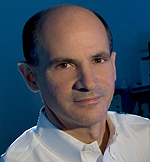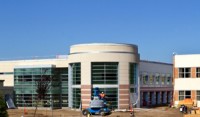Scientists trigger muscle stem cells to divide

Thomas Rando
BY KRISTA CONGER
A tiny piece of RNA plays a key role in determining when muscle stem cells from mice activate and start to divide, according to researchers at the Stanford University School of Medicine. The finding may help scientists learn how to prepare human muscle stem cells for use in therapies for conditions such as muscular dystrophy and aging by controlling their activation state.
It’s the first time that a small regulatory RNA, called a microRNA, has been implicated in the maintenance of the adult stem cell resting, or quiescent, state.
“Although on the surface the quiescent state seems to be relatively static, it’s quite actively maintained,” said Thomas Rando, MD, PhD, professor of neurology and neurological sciences. “We’ve found that changing the levels of just one specific microRNA in resting muscle stem cells, however, causes them to spring into action.”


